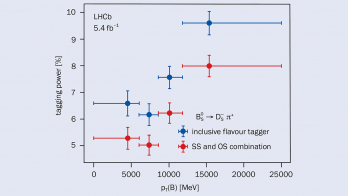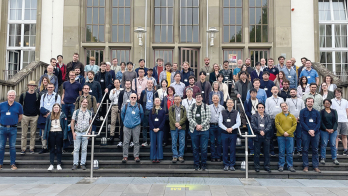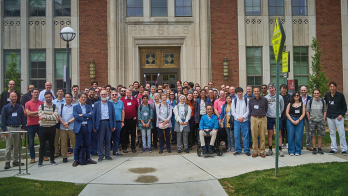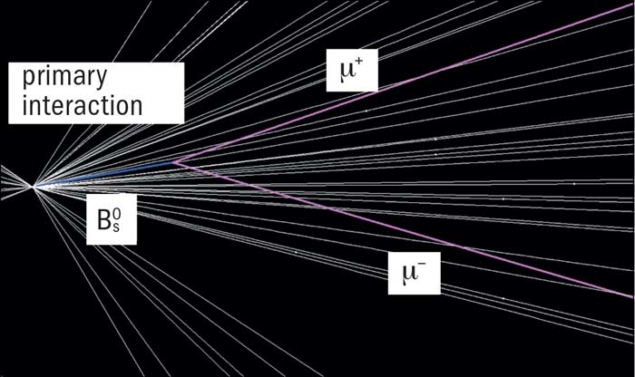
It has taken decades of hunting but finally the first evidence for one of the rarest particle decays ever seen in nature, the decay of a Bs (composed of a beauty antiquark and a strange quark) into two muons, has been uncovered by the LHCb collaboration.
In the Standard Model, the decay Bs → μμ is calculated to occur only three times in every 1000 million Bs decays. While the Standard Model has been incredibly successful, it leaves many unanswered questions concerning, for example, the origin of the matter–antimatter asymmetry and the essence of dark matter. Extended theories, such as supersymmetry, may resolve some of these issues. These theories allow for new particles and phenomena that can affect measurable quantities. The branching fraction B(Bs → μμ), for example, can be enhanced or reduced with respect to the Standard Model prediction, so the measurement has the potential to reveal hints of new physics. The LHCb experiment is particularly suited for such an indirect search for the effects of new physics, complementary to direct searches for new particles.
The LHCb collaboration performed the search for Bs → μμ (and B0 → μμ) by analysing 1.0 fb–1 of proton–proton collisions at 7 TeV in the centre of mass (from 2011) and 1.1 fb–1 at 8 TeV (2012). The signal selection starts with the search for pairs of oppositely charged muons that make a vertex that is displaced from the proton–proton interaction vertex (see figure 1). The signal and background are then separated using simultaneously the invariant mass of the two muons as well as kinematic and topological information combined in a multivariate analysis classifier. The particular classifier used is a boosted decision-tree (BDT) algorithm, which is calibrated with data for both signal and background events. The latter are dominated by random combinations of two muons from two different B mesons; this contribution is carefully determined from data.
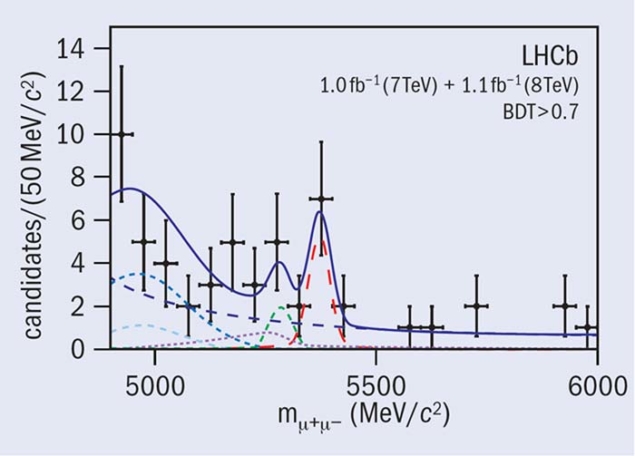
The number of B0 → μμ candidates that LHCb observes is consistent with the background expectation, giving an upper limit of B(B0 → μμ) < 9.4 × 10–10 at 95% confidence level. This is the world’s most stringent upper limit from a single experiment on this branching fraction. However, for Bs → μμ, LHCb sees an excess of candidates with respect to the background expectation (figure 2). A maximum-likelihood fit gives a branching fraction of B(Bs → μμ) = 3.2 +1.5–1.2 × 10–9. The probability that the background could produce an excess of this size or larger is 5.3 × 10–4, corresponding to a signal significance of 3.5σ.
The measurement of Bs → μμ is close to the Standard Model prediction, albeit with a large uncertainty. This eagerly awaited result was presented at the Hadron Collider Physics Symposium in Kyoto and at a CERN seminar, and is now published. While it does not provide evidence for supersymmetry, it does constrain the parameter space for this and other models of new physics, and is a step further in understanding the universe.






